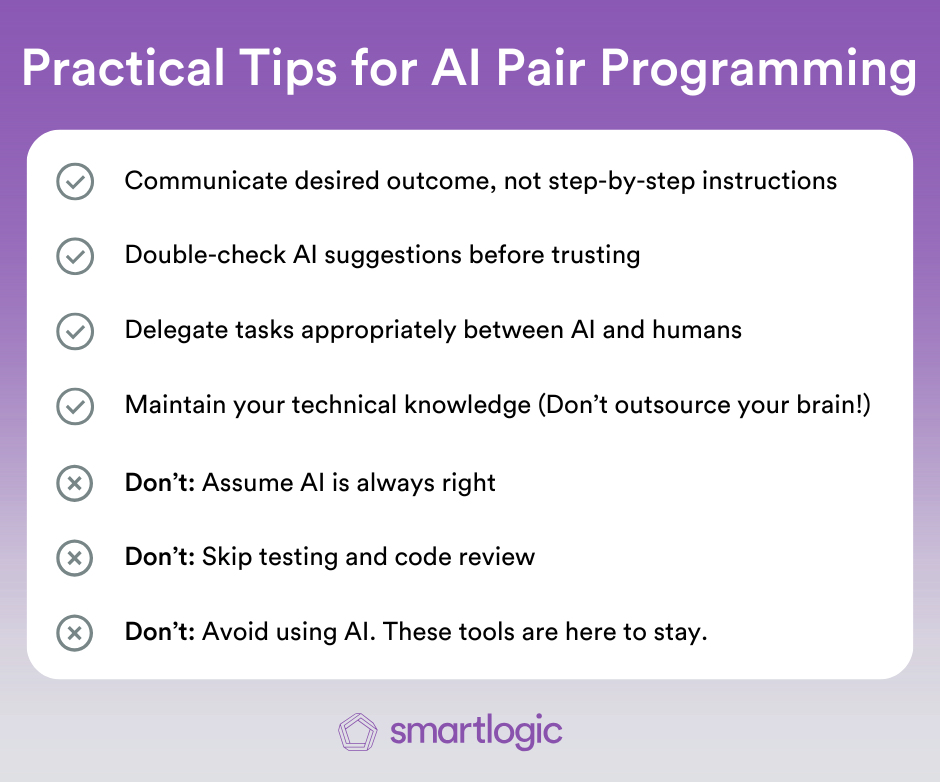A practical guide to leveraging AI for complex codebase migrations without losing your sanity
Picture this: You're staring at a Rails application that hasn't had its JavaScript touched since the Beijing Olympics. The asset pipeline is still running on Sprockets, there's jQuery scattered like confetti at a New Year's party, and somewhere in the depths of the codebase lurk custom plugins that were written by developers who are now probably running a craft brewery in Colorado.
Your client wants it modernized. Yesterday, preferably.
If you've ever inherited a legacy system, you know this feeling. It's that special combination of excitement (new project!) and dread (what fresh nightmare awaits me in this codebase?) that makes our profession so interesting.
This is the story of how I tackled one of these modernization projects using AI as my co-pilot, and what I learned about the changing nature of software development along the way.
The Reality of Legacy Rails Modernization
Let's be honest about what we're really dealing with when we talk about modernizing legacy code. It's not just updating syntax or swapping out old libraries. You're staring down technical debt, compatibility issues, and the uncomfortable reality that the people who originally wrote this code have long since moved on to other projects (or other careers).
Here's what any developer dealing with legacy systems will recognize:
Technical debt everywhere. Years of "temporary" fixes that became permanent, hardcoded logic that made sense at the time, and dependencies that are held together with the digital equivalent of duct tape and good intentions.
Integration nightmares. Legacy systems need to play nice with modern tech stacks, but APIs don't line up, data formats clash, and everything feels like a house of cards.
Data migration headaches. Converting outdated data formats while ensuring compatibility with modern systems is like renovating a house while still living in it.
The knowledge gap. The original developers are gone, documentation is sparse (if it exists at all), and you're left playing detective to figure out why certain decisions were made.
Testing anxiety. Every small change introduces the risk of breaking something elsewhere, and you might not discover it until weeks later.

Fortunately, this particular application wasn't the worst-case scenario, but it had enough of these challenges to make things interesting. It was running on Rails with a Sprockets-based asset pipeline, jQuery dependencies everywhere, React components mixed in seemingly at random, and a number of custom TinyMCE plugins that added custom editing features and interface elements.
Everything worked, but as someone new to this codebase, it was the kind of setup that makes you nervous about changing anything.
Starting with AI-Assisted Planning
Before diving into code, I did something different this time: I used AI to help create a migration strategy.
I fed my AI tool the existing architecture, explained the constraints (zero downtime, maintain all functionality, move to Rails 7.2 standards), and asked for a comprehensive migration plan. What came back wasn't just a to-do list - it was a thoughtful analysis of dependencies, potential pitfalls, and a phased approach that would minimize risk.
The AI suggested:
- Start with asset pipeline migration (lowest risk, highest impact)
- Convert React components to vanilla JavaScript (eliminate dependencies)
- Modernize TinyMCE integration (highest complexity, do last)
- Create rollback plans for each phase
This wasn't just helpful, it was eye-opening. Instead of spending hours mapping out dependencies and potential issues, I had a solid strategic foundation in minutes. The AI had considered edge cases I might have missed and suggested an order of operations that made sense from both technical and business perspectives.
Where GitHub Copilot Became My Development Partner
With the plan in place, I started the actual migration work. This is where GitHub Copilot transformed from a helpful autocomplete tool into something closer to a development partner.
Pattern Recognition That Actually Understands Context
The first breakthrough came when converting JavaScript files from Sprockets' //= require directives to ES6 modules. Instead of manually updating dozens of files, I showed Copilot the pattern I wanted:
"Convert this Sprockets JavaScript file to ES6 modules while maintaining jQuery as a global variable for backward compatibility."
Copilot didn't just change the syntax - it understood the constraint about jQuery and suggested creating a separate preload bundle that would load first and assign jQuery to the window object. This solved a problem I hadn't even fully articulated yet.
AI as a Debugging Partner
When I hit complex issues - like image paths not resolving correctly after migrating from Sprockets to Propshaft - Copilot became invaluable for debugging. It could quickly suggest what might be wrong, help me grep through files to investigate, and even explain the underlying differences between how the two systems handle asset serving.
This freed me up to focus on architectural decisions while the AI handled the investigative legwork.
Learning from the Existing Codebase
Perhaps most importantly, Copilot helped me understand patterns in the existing code. It could analyze how the custom TinyMCE plugins were structured and suggest the best way to modernize them to ES6 modules. It recognized Rails conventions and proposed solutions that fit the existing codebase's style rather than imposing arbitrary patterns.
The Real Lessons: Mastering AI-Assisted Development
Think Declaratively, Not Imperatively
I learned to describe outcomes rather than step-by-step processes. Instead of: "First update this require statement to use import syntax, then add the export at the bottom, then make sure the function is available globally, then test that inline scripts still work..."
I would say: "Convert this component to use modern ES6 modules while maintaining all existing functionality and jQuery global access."
This approach leverages AI's pattern recognition abilities instead of treating it like an advanced search-and-replace tool.
Build Context Incrementally
Working with a large Rails codebase means the AI needs to understand not just what you're changing, but why. I learned to:
- Start with architectural goals and constraints
- Show examples of the patterns I wanted to establish
- Let the AI extrapolate from those examples
- Iterate until suggestions aligned with the project's specific needs
Know When to Trust, When to Verify
Copilot excelled at repetitive conversions, syntax transformations, and following established patterns. But I learned to double-check anything involving business logic, security considerations, or complex integrations. The key insight: AI is excellent at implementation once you've made the strategic decisions.
From Coding to Conducting
This project crystallized something I'd been sensing for a while: my role as a developer is fundamentally changing.
Beyond Research and Recall
We've been living in what economists call a "knowledge economy" - where your value comes from what you know and your ability to apply that knowledge. But what happens when computers can access and synthesize knowledge faster than we can?
I’ve spent countless hours researching best practices, finding the right documentation, and combining information from various sources. AI can now do this more quickly and often more thoroughly than I can. That's not a threat - it's a liberation from routine cognitive tasks.
The Art of AI Delegation
Instead of being primarily a "maker" of code, I found myself becoming a "manager" of AI capabilities. I was allocating work between myself and Copilot, deciding which tasks to delegate and which required human judgment.
This shift requires developing new skills:
- Quality assessment: Knowing when AI output meets requirements
- Task decomposition: Breaking complex problems into AI-manageable pieces
- Resource allocation: Choosing the right tool (AI or human) for each job
- Strategic oversight: Maintaining architectural vision while AI handles implementation
The New Management Skills
Working effectively with AI requires many of the same skills that make good human managers:
Clear vision articulation: AI works best when you can clearly describe the desired outcome. Vague requirements produce mediocre results.
Quality standards: You need to develop a taste for what constitutes good work and be able to communicate why something doesn't meet standards.
Delegation skills: Knowing which tasks are appropriate for AI assistance and which require human insight.
Integration thinking: Understanding how AI-generated work fits into larger systems and business objectives.
What This Means for Consulting Teams
At SmartLogic, this evolution changes how we deliver value to clients. AI-assisted development isn't just about writing code faster - it's about taking on more ambitious projects with the same resources while maintaining quality.
For this client, the benefits were clear:
- Faster delivery without compromising thoroughness
- Better documentation (AI helped generate comprehensive migration guides)
- Reduced risk through systematic analysis and planning
- Future-proofing with modern tooling and practices
The client got a completely modernized application without the typical disruption of major architectural changes.
Practical Takeaways for Development Teams
For Individual Developers
Master AI collaboration by:
- Learning to communicate outcomes clearly rather than giving step-by-step instructions
- Developing judgment about when to trust AI suggestions versus when to verify
- Building skills in quality assessment and iterative refinement
- Maintaining deep technical knowledge (you can't manage what you don't understand)
For Team Leaders
The competitive advantage goes to teams that adapt quickly to AI-augmented workflows. This means:
- Training developers in effective AI collaboration techniques
- Establishing quality standards for AI-assisted work
- Redesigning project planning to leverage AI capabilities
- Maintaining technical depth while developing coordination skills
For Business Leaders
AI tools make previously risky or expensive modernization projects more feasible. Legacy system owners can now tackle updates that were too complex or costly before, but this requires working with teams that understand how to leverage these tools effectively.

The Bigger Picture
The project revealed something important about the future of software development. We're not moving toward a world where AI replaces developers - we're moving toward one where developers become more strategic, focusing on architecture, quality, and business alignment while AI handles more of the implementation details.
This transition is happening whether we're ready or not. The teams that learn to collaborate effectively with AI will be able to take on larger, more complex projects. Those that don't will find themselves at a significant disadvantage.
Looking Ahead
Legacy system modernization is just the beginning. The patterns I learned apply to:
- Technical debt analysis and prioritization
- Security audit assistance for older applications
- Documentation generation from existing codebases
- Test coverage enhancement with AI-generated test cases
The technology is evolving rapidly, but the core insight remains: AI tools are most powerful when they amplify human expertise rather than replace it.
The Bottom Line
Modernizing legacy systems has always been risky and time-consuming. AI doesn't eliminate those challenges, but it changes the equation significantly. What used to require large teams and extended timelines can now be accomplished with smaller teams moving faster and with more confidence.
For our clients, this means ambitious modernization projects come at a lower cost, and necessary updates become less disruptive to business operations.
The future belongs to development teams that can effectively coordinate human and AI capabilities while maintaining the strategic thinking and domain expertise that remain uniquely human. The question isn't whether AI will change software development - it's how quickly we can adapt to lead that transformation.
Ready to modernize your legacy application? Let's talk about how SmartLogic can help you navigate the transition.



